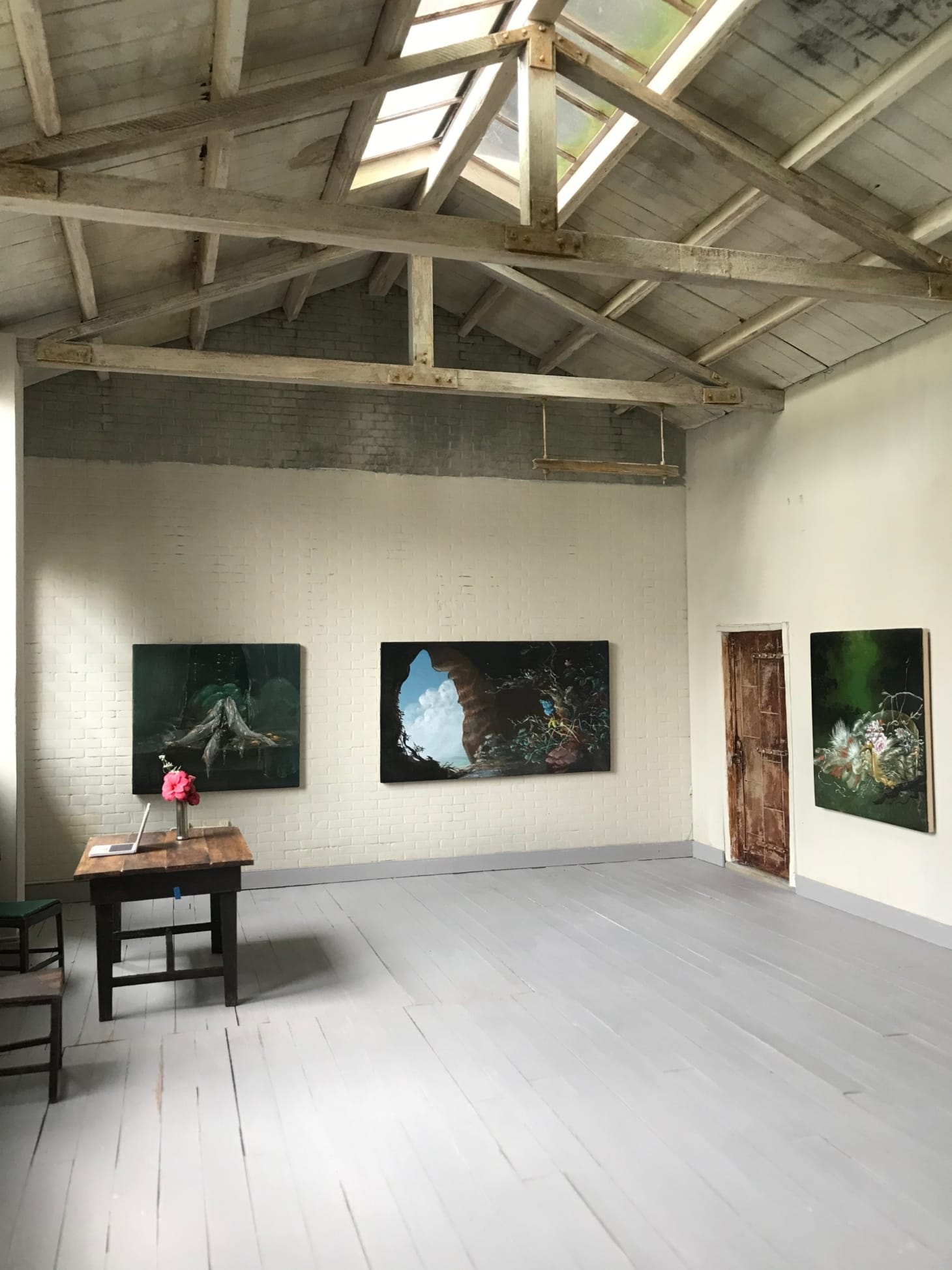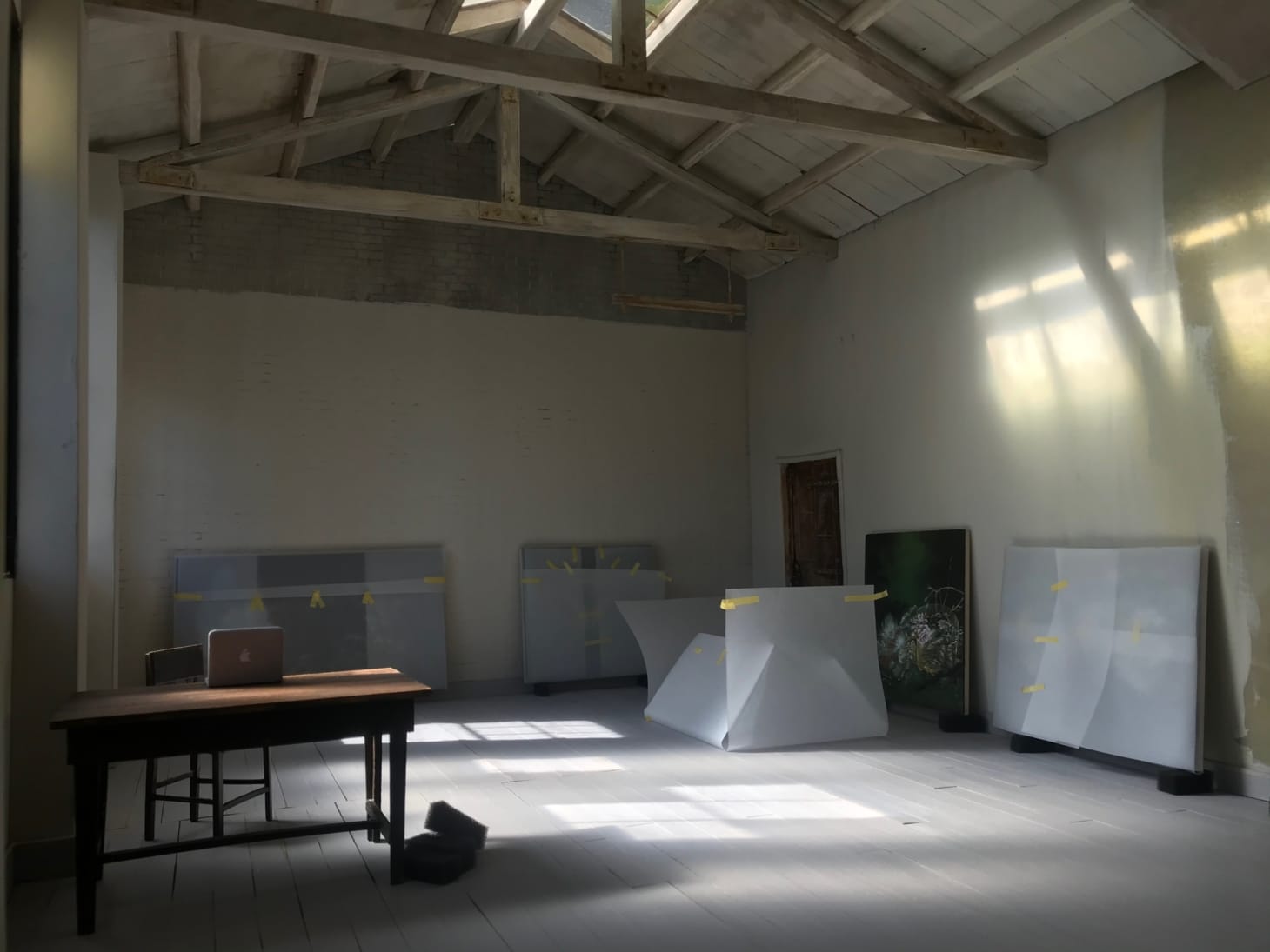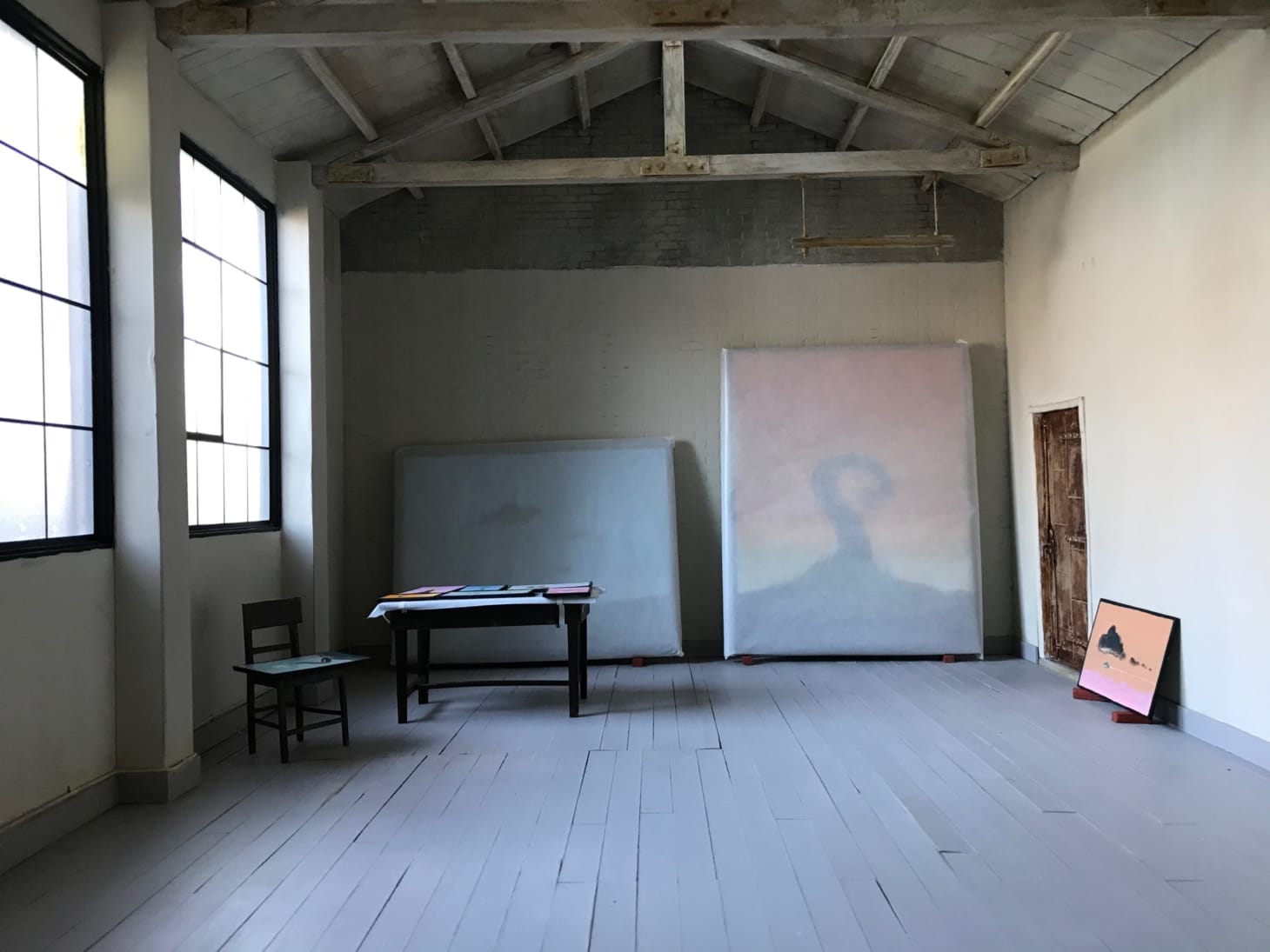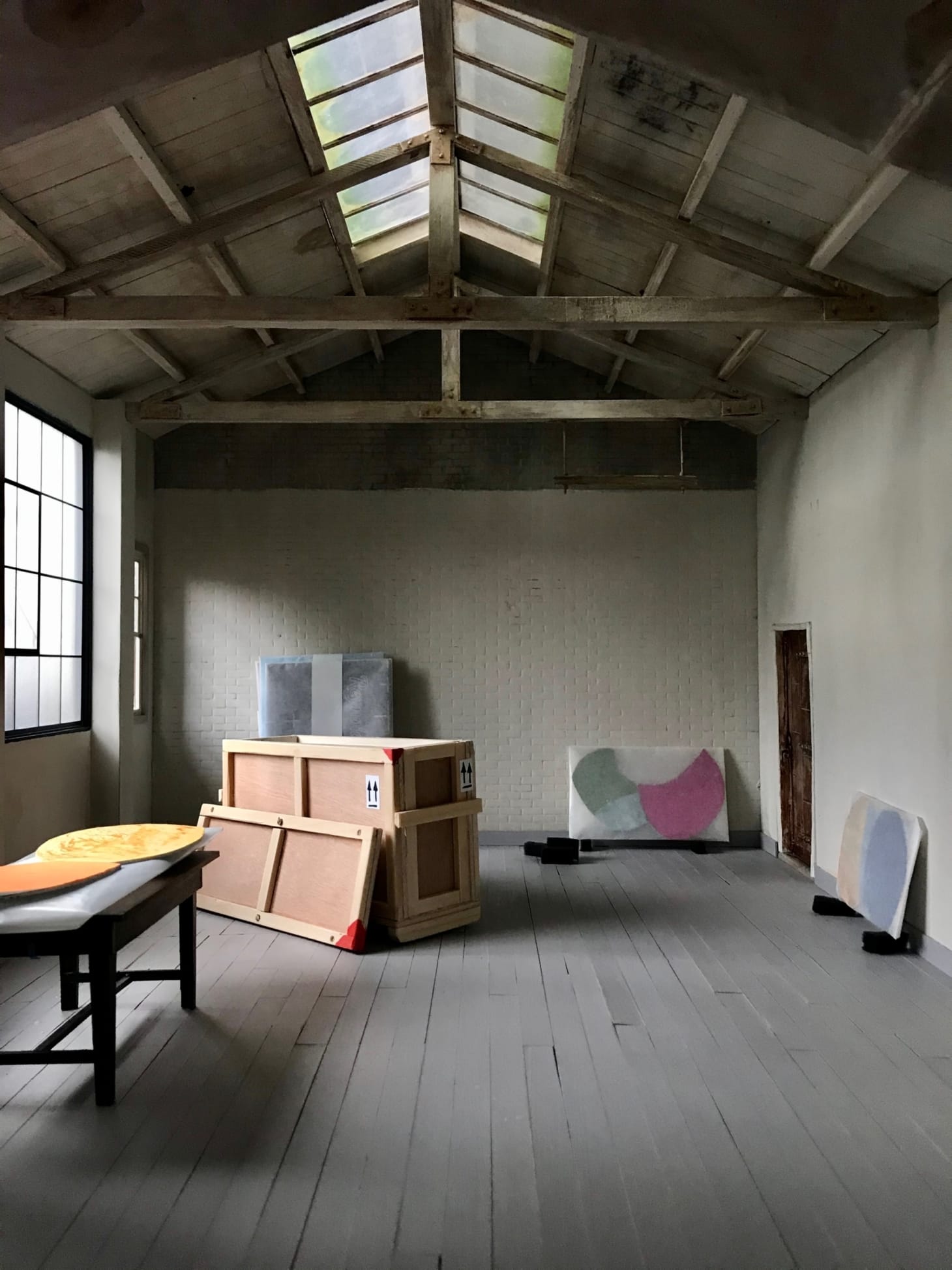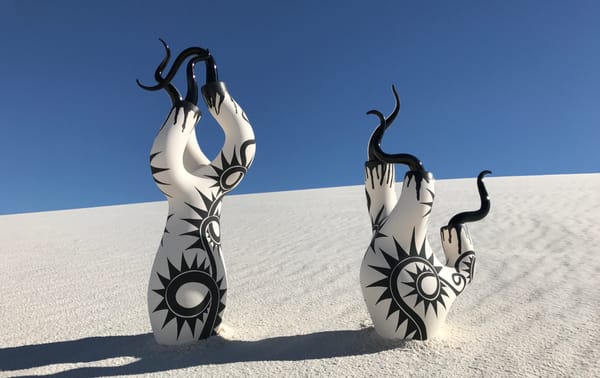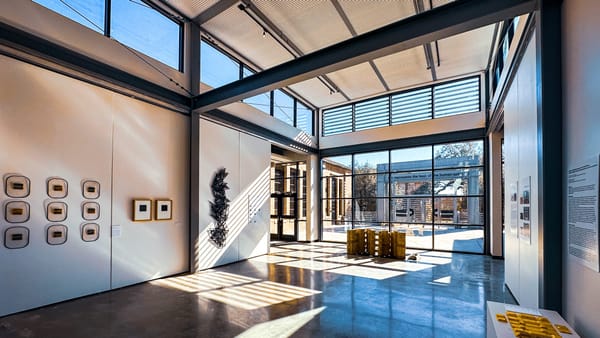A Miniature Gallery Mounts Tiny Artworks, With Big Results
Shelter In Place is a Boston gallery born out of the coronavirus pandemic. Artist Eben Haines built the maquette and artists submit works to scale, which are photographed with surprisingly realistic results.
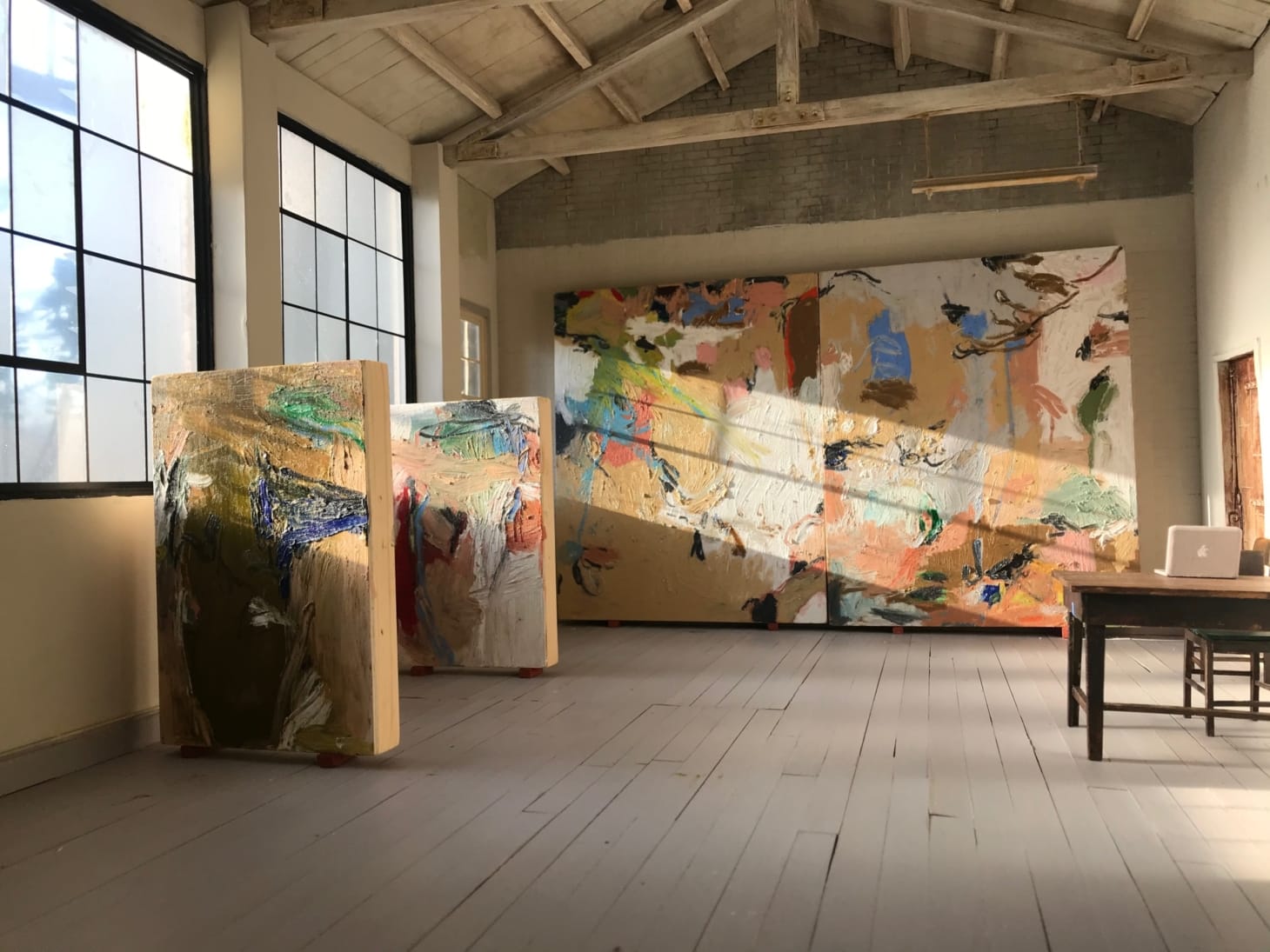
In the past month, a Boston gallery has managed to mount 15 exhibitions of brand-new works, with a rigorous program still to come. With the onset of the coronavirus pandemic, arts institutions around the globe shuttered one after the other; meanwhile, Shelter in Place Gallery was not only founded during the crisis but continues to thrive.
Of course, there’s a catch. Shelter In Place is a miniature gallery, measuring 20 by 30 inches and exhibiting scaled-down works in a model structure created using foam core, mat board, balsa wood, and plexiglass. Artists can submit works at a 1:12 or one inch to the foot scale, allowing them to create and show even ambitious, seemingly large-scale pieces — a romantic, suspended latex installation by Mary Pedicini; wall-to-wall canvases by B. Chehayeb — while traditional exhibition spaces remain closed. With high ceilings and skylights that flood the space with sunshine, the condensed gallery is impressively lifelike, giving artists room to get particularly creative. In some photographs, it is nearly impossible to tell apart from larger galleries.
The brilliant concept was devised by Eben Haines, a painter and graphic designer for exhibitions at the Museum of Fine Arts (MFA), Boston. “With the ongoing shutdowns and lockdowns across the globe, artists are having to stay home, and away from their studios. For most of us, that means drastically less space to create,” he said in a first post on Instagram, the gallery’s virtual home.
“So I’ve built SIP gallery as a new platform for Boston Artists (and eventually from all over) to allow for large scale artworks to be made at a desk or dining room table,” he added.

The idea first came to him back in 2018, long before the pandemic, when Haines was asked to participate in a group show at the Porch Gallery in Minneapolis titled Art Fair. The concept was simple: each artist received a 10-by-10-inch, white-painted MDF box that would serve as an ersatz fair booth where they could show scaled work.
“I went a little overboard making works and building out a scaled room with wallpaper, moldings, etc.,” Haines told Hyperallergic. Months later, as a rainy day project, he decided to create his own 1:12 scale model to house maquettes for large-scale works that he could not produce in his studio due to space or financial constraints.
“But then the weather got better, and the more or less abandoned model stayed tucked away in my studio,” he said.
Enter the current crisis. Haines was one of more than 300 workers furloughed from the MFA Boston, which closed its doors in March to help contain the spread of the coronavirus. As the situation escalated, he realized it would be difficult to access his studio during lockdowns, so he packed up supplies and set up shop at his desk at home.
Haines dusted off the gallery model from years back and began making miniature paintings, initially as a strategy to continue working in his reduced studio space, which had shrunk from 400 square feet to a mere 10. But it dawned on him that other artists might be in a similar predicament, confined to less-than-ideal work conditions and aching to share their creations in a meaningful way.
“That was when I realized how fruitful this space could be for artists coping with the same situation, who need an impetus to continue making through this new reality we’ve been placed in,” Haines said. “So I made an Instagram and asked for submissions!”
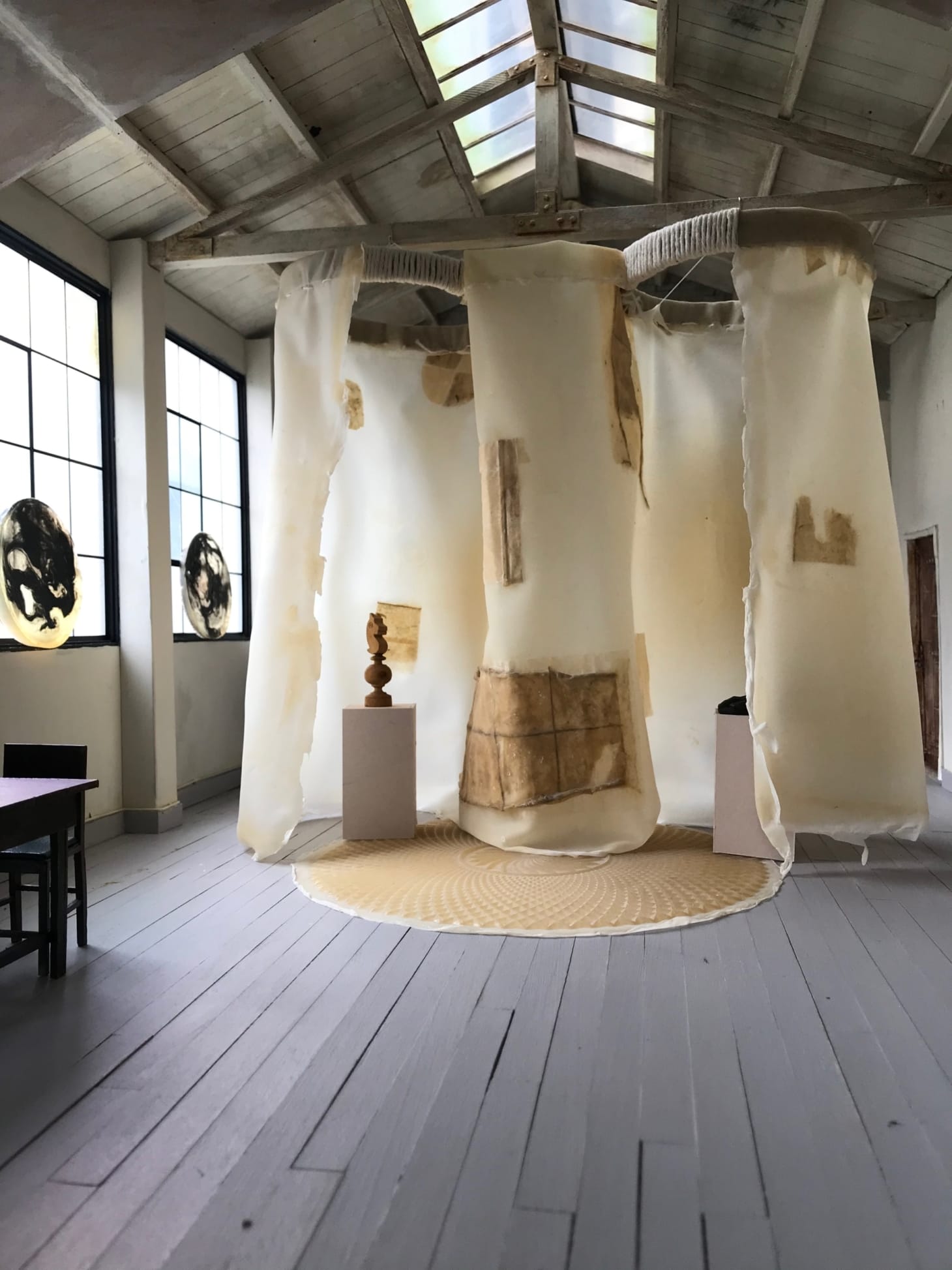
Each exhibition at Shelter In Place is based on artist-submitted work selected by Haines and his partner and gallery assistant, Delaney Dameron, from submissions initially sent online. The shows usually last three to four days, during which Haines and Dameron capture installation and detail photography as well as video that are shared on the gallery’s Instagram.
Haines was amazed by the elaborate quality of the tiny works that arrived on his doorstep. When mounted in his intricate gallery maquette, the result is deeply authentic and visceral; shots of the lilliputian exhibitions are virtually impossible to distinguish from life-sized shows.
That’s partly thanks to the gallery’s submissions criteria: all of the works on view are original, and it prioritizes new pieces as opposed to small copies of existing ones. Digital copies are all but prohibited.
“The model is made out of the same materials the exhibition designers I work with use for their exhibition models,” said Haines. “I then used paint to age everything as realistically as I could.”
Haines’s father was a frames conservator who taught him how to faux grain and age wood, techniques he incorporates frequently in his own work. So far, all works have arrived ready to be hung, which has made installations easier. Haines said some works like Peter Kazantsev’s dazzling, disco ball-like dangling sculpture of a glittery hand posed a bit more of a challenge.
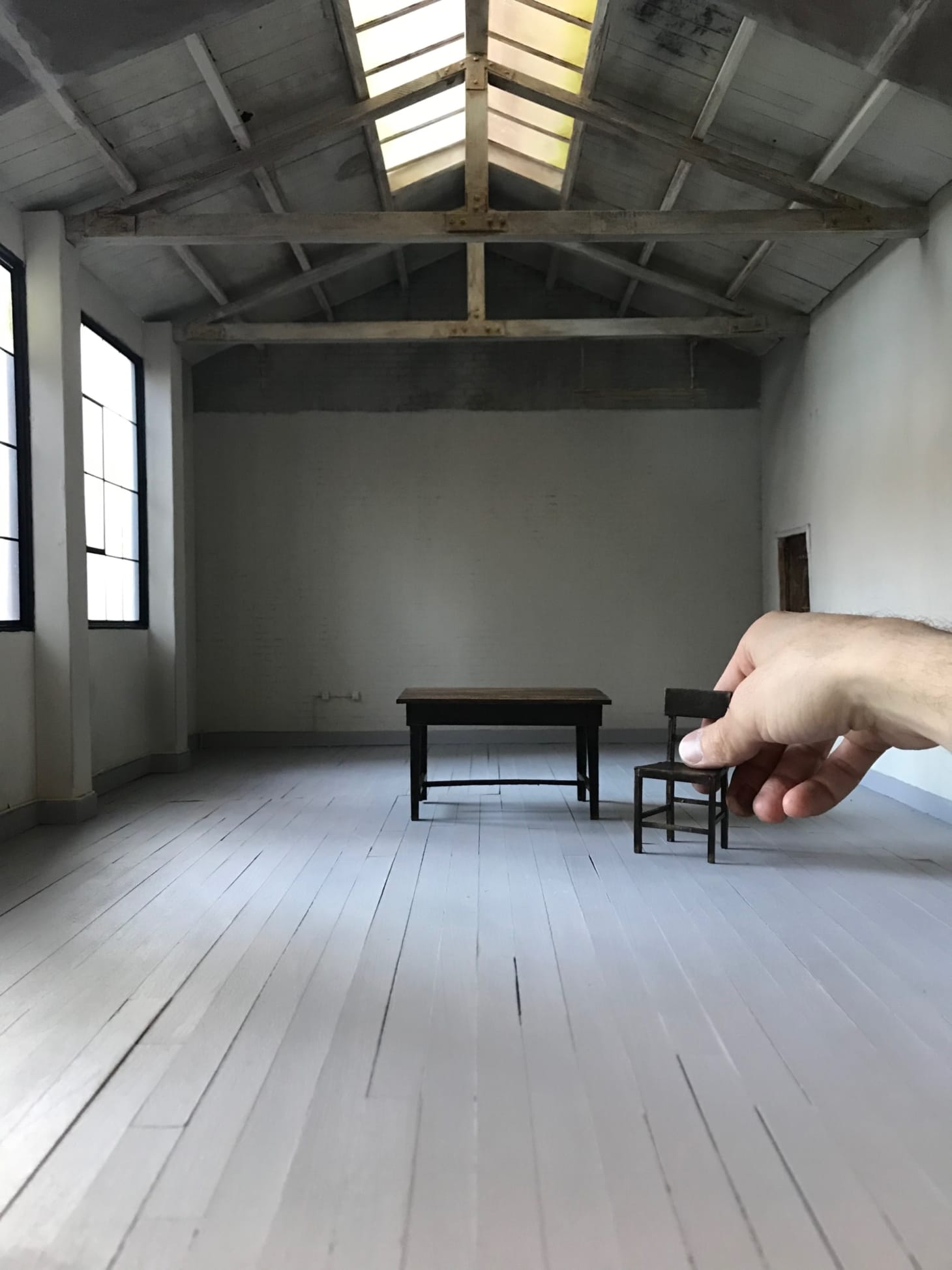
Haines emphasizes the project is not commercial; instead, any sales inquiries received are rerouted to the artists themselves, or to their galleries. Nicole Duennebier’s exhibition, for instance, nearly sold out before they could deliver the mini-paintings back to her gallery, 13FOREST.
“I’m hoping that artists are able to get more eyes on their work and even sell some work during the pandemic and beyond,” said Haines. “One of my ambitions for this project, besides urging people to step outside of their crisis mode for a little bit, is for artists to be able to use their submission proposals and photographs of their installed work to send to galleries, residencies, or grant programs, and have some momentum when the country opens back up.”
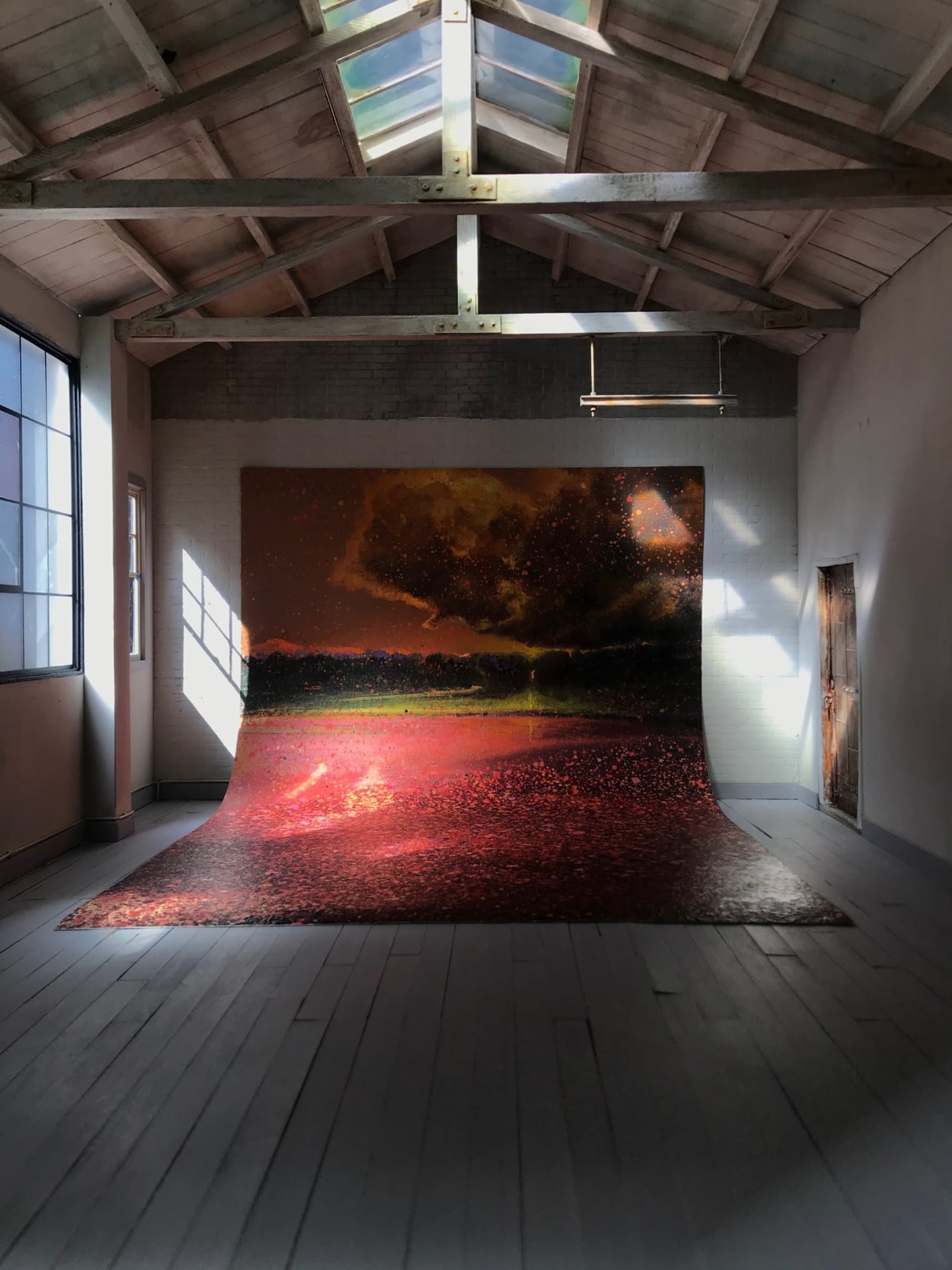
Tiny exhibitions, of course, will never replace the joy and freedom of working at a larger scale, but in a nation with an artistic population that is overwhelmingly without economic prospects, Shelter In Place provides a bit of blue sky. It invites artists to experiment with different formats and mediums, and may even help them build their portfolios.
Haines, himself a cultural worker affected by recent waves of furloughs and layoffs in the sector, is vocal about the need for equal opportunity in the art world. MFA Boston has kept furloughed workers insured through June, though it is unclear what July will bring.
“The messages of togetherness and unity we’re hearing from museum directors tend to ring a bit hollow when half of the staff is on furlough. It is then compounded by the fact that, even after executive pay cuts, these directors’ monthly compensation is still higher than what those furloughed workers make per year,” said Haines.

So far, Shelter In Place has shown only local work that’s easy enough to drop off (“contact free, of course”), so as to avoid possible contamination during shipping. But Haines hopes to extend the opportunity to a more diverse group of artists.
“We’re honestly so busy with the local response we’ve had that it seems daunting to open it up, but once going to the post office gets a little safer and easier, I’d love to be able to show work from outside Boston,” said Haines.
In the meantime, local artists or those who can easily transport work to the area can review submission guidelines on the gallery’s Instagram.
Currently at the gallery: glazed ceramic works by Fabio J. Fernández. Up next: “large” paintings by Sharon Lacey. Both not to be missed.
